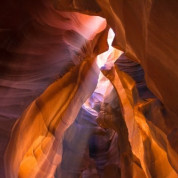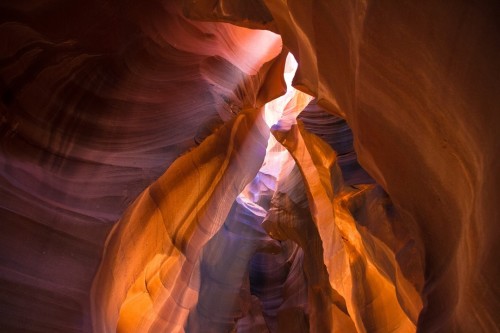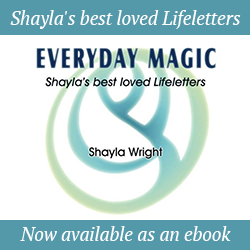
“I want to be more creative,” a woman said to me the other day. “I’ve been feeling this desire for a long time. I need some help with this.”
A man I was working with told me, “I feel that my creative energy is shut down. I want to open this channel, and I don’t really know how. Sometimes I feel ashamed, that I can’t express myself more freely. I don’t know why this feels so important.”
This longing for contact with our core creativity runs strong in us. It feels important because it is an expression of something deep and fundamental in our human nature. We can think of this drive, often called Eros, as the tendency toward survival, propagation, sex, and other creative, life-producing drives. But I think this way of thinking about it is quite limited. It does not allow us to get to the heart of Eros, which is the primordial creative impulse. The nature of this impulse is connected with the nature of love, and of our evolution. It takes us far beyond our survival needs.
When I was growing up in our family, we had all kinds of people coming to our house: people working for the government, people in business and the trades, and artists. From the very beginning, I was drawn to the artists. They felt warm, alive and welcoming. I liked being around them, though I couldn’t have said why at that time. Now I know it was because of their availability, their vitality, and a feeling that they were comfortable inside their own skin. They were genuinely interested in me, in life. They seemed to be less ‘grown up’ and more ready to play, than the other people who came to visit.
As a result of those early connections, I grew up wanting to be an artist. I was not so focused on painting, or music or sculpture, but much more interested in living a creative life, an emergent life, a life full of surprise and adventure. This love of deep creativity has never left me; much of my life has been about exploring the ways in which we can nourish this creative capacity in ourselves, in our communities and in our world.
These days, the question of how we can access our creative energy seems more relevant and more urgent than ever. Can we find our way through our current challenges without a breakthrough, without innovation, without leaning deeply into our collective creative intelligence? How will tap into the courage and power we need in order to leave behind what we think we know, and discover something new, something that might disrupt all of our old ways of knowing and perceiving? Alfred North Whitehead described three essential aspects of the universe: the one, the many, and the inherent advance into novelty and creativity. This impulse lives in all of us, in our wiring, in our love and in our intelligence. Our deepest creativity is what will help us solve the massive problems we are now facing on our planet.
Working with people all over the world who long to live inside this creative energy, here is what I have discovered: it’s not so easy to live this way. It’s actually very challenging to embody this kind of creative vitality. There are all kinds of difficulties and obstacles that we encounter as we open to the desire to live in this creative flow. We have to find ways to ground the energy, to get support, to build momentum for whatever we want to create. Each one of us has to evolve and transform, if we want to embody this creative power.
Recently, Google released the results of a study they did called Project Aristotle. Google wanted to be able to track the differences between two kinds of teams in their culture: the ones that were creative, daring and innovative, and who consistently delivered results, and the teams that were not able to perform at this level of creative intelligence.
Here’s the link to an excellent article by Charles Duhigg about this project and what they found out: What Google Learned in it’s quest to build the perfect team
What emerged from this study was something very surprising: these very innovative and successful teams had co-created a culture of psychological safety. It turns out that it was this common ground of safety that the top teams had in common.
Psychological safety, writes Duhigg is ‘‘a sense of confidence that the team will not embarrass, reject or punish someone for speaking up…It describes a team climate characterized by interpersonal trust and mutual respect in which people are comfortable being themselves.’’
He goes on to say that what Project Aristotle has taught people within Google is that “no one wants to put on a ‘‘work face’’ when they get to the office. No one wants to leave part of their personality and inner life at home. But to be fully present at work, to feel ‘‘psychologically safe,’’ we must know that we can be free enough, sometimes, to share the things that scare us without fear of recriminations. We must be able to talk about what is messy or sad, to have hard conversations with colleagues who are driving us crazy. We can’t be focused just on efficiency.”
Another thing that emerged during Project Aristotle is that this kind of safety emerges in a culture where everyone’s voice is heard and respected. Meetings are not about just listening to the same two or three people speak. They realized, doing this research, that as long as everyone got to speak, the teams did well. When one person, or a small group dominated the room, things did not go so well. Why not? Because their collective intelligence declined. They no longer had access to the resources of the whole field, only to a small part of it.
There seems to be something significant in the fact that this essential element of safety has been documented by one of the most powerful companies on our planet. Google didn’t set out to create this kind of safety-it emerged as the most crucial resource for supporting our capacities to be creative, daring, innovative and co-operative.
It leaves us with some very interesting questions to contemplate:
-
Where do I feel safe and how does this safety impact me?
-
What kind of safety can I offer the people in my life?
-
If I don’t feel safe, or if I don’t know how to offer a space of safety, how can I learn to grow into this capacity?
As the violence around us escalates, and the fear and aggression along with it, creating a space of safety and radical creativity feels like a bright current in the river of our life, gently pulling us forward.
with love,
Shayla
2 Comments
Join the conversation and post a comment.



This is a lovely insight to the role of polarity and its essential function in creativity. It is the erotic charge between ‘opposites’ that will bring something from nothing. If we neutralize polarity, blur the distinctions, mix all the paints together, the result is bland gray. Fog. No form, substance, tension or vitality. The world was set into motion when day was separated from night, dry land appeared from the waters and duality was born.
And here is the paradox: Creativity seems to be companioned by a kind of ‘unsaftey’ — that is, how will I be received if I step out of the group into something new, unforeseen, and thus hazard my belonging for the sake of creativity? Now comes the driving polarity behind personal creativity: becoming vs belonging. Conscious group safety is the essential fertile container for such excursions into the unknown and unpredictability of individual creativity.
caught in the rapids of creativity
at this moment
cradled in the heart of Eros
lifestream
wither
now?